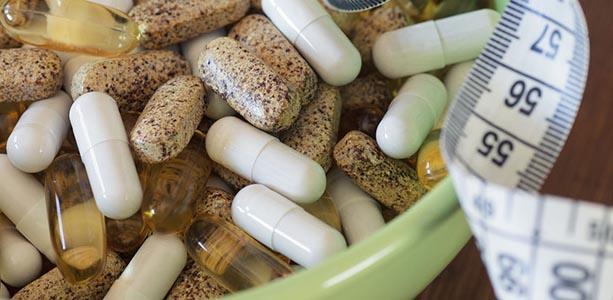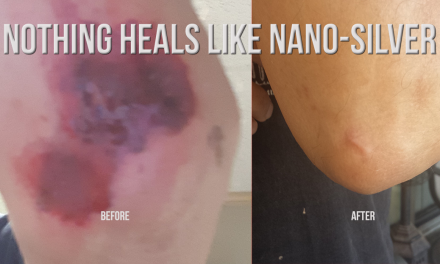Thanks to a combination of new advances into natural remedies and a veritable treasure trove of time-tested information, it is more possible than ever to preserve and improve your health through holistic means. The growing popularity of such products can be witnessed both in the proliferation of the specialty stores that carry them and their emergence on the shelves of more traditional retailers. More importantly, this isn’t due to any hidden financial agenda, as these products lack the backing of the big pharmaceutical corporations that have made so many pills and powders household names. Instead, a handful of the natural remedies are gaining steam for one simple reason: they work. When taken properly, natural supplements can offer all the benefits of their synthetic counterparts without the considerable drawbacks of side effects, making them an essential part of one’s day-to-day wellness regiment.
While there are all-natural supplements and nutrients suggested for the treatment of every ailment from the flu to foot fungus, here are a few that are particularly relevant to those going through the male aging syndrome—associated with declining testosterone levels—known as Andropause (Male Menopause) or what I like to call; the Beer Belly Blues.
Testosterone-Supporting Nutrients
Just in case you haven’t heard (or read any of my books), testosterone is good—very good in fact. It helps regulate a number of our vital functions and its natural tendency to diminish along with aging is what ushers in the Beer Belly Blues. Therefore, maintenance of testosterone levels is absolutely a priority, especially when it can be done through healthy, natural and research-proven means. Following are some of my favorite nutrients to help support optimal testosterone levels.
Peruvian Maca—Found high in the Andes mountain range in Peru, Lepidium meyenii is a perennial root vegetable with a number of medicinal properties.1 Similar to a radish or turnip, maca has seen over 2,000 years of use dating back to the indigenous people of the area, who employed it as a foodstuff, a form of currency, and an aphrodisiac.2 While still used for the first purpose (much less so for the second), maca remains even more relevant to the third, especially in terms of this article.
While maca has yet to be tied directly to the increased production of testosterone, its unique combination of nutrients are thought to have an overall salutary effect on the endocrine system, thus allowing for the optimization of its functions.3 Maca seems to work by enhancing the overall message of the body’s hormones—yes, including testosterone —through a better binding of the hormone to its receptor4, thus causing an amplification of the overall hormonal response (kind of like turning up the volume on your headphones).
Chrysin (with Bioperine)—Unfortunately, as men age they become very efficient—too efficient in fact—at converting their testosterone to estrogen. This happens when belly fat increases, as belly fat manufactures a nasty enzyme called aromatase, which is responsible for synthesizing estrogen from testosterone (think “man boobs”). Yes, aromatase is a very, very bad thing (at least when left unchecked). Fortunately, chrysin is around to help prevent a future in which we need to choose a t-shirt based on how well it accentuates our cleavage. It is a naturally-occurring flavoring agent found in both blue passion flower and honeycomb, and is popular with those undergoing rigorous strength training (such as athletes or bodybuilders) for its renowned ability to keep aromatase levels (as well as our cup sizes) in check.5
While research has found that there may be difficulty in absorbing chrysin into the bloodstream, it has also found a natural way to improve results. Bioperine, a component of black pepper and long pepper, is thought to help the body in deriving the maximum benefit possible from chrysin when the two are taken together. It does so by slowing down the process of metabolism, thereby enhancing the bioavailability of certain substances, including the active agents in chrysin.6
Stinging Nettle Root—The medicinal use of stinging nettle root can be traced all the way back to the 10th century, when it was included in a pagan manual called the Nine Herbs Charm. Since then, stinging nettle root (and leaf) has been used as a folk remedy for a maladies such as rheumatism, arthritis7, and dandruff. It has also been researched as a potential tool in the treatment of benign prostatic hyperplasia (BPH)8, the overgrowth of the prostate gland which leads to uncomfortable experiences like getting up way too many times in the middle of the night to pee (on the seat of course).
Stinging nettle root is also taken by those wishing to increase their levels of free testosterone. It works by preemptively occupying the binding sites of a protein that binds to testosterone called sex hormone binding globulin or SHBG.9
Indole 3 Carbinol (I3C)—I3C is the by-product of the breakdown of glucosinolate glucobrassicin, a nutrient found in high concentrations in the leafy green cruciferous plants such as cabbage, bok choy, and broccoli. It has been noted for its ability to convert estrogens from a form particularly problematic to those in the midst of the Beer Belly Blues (16-alpha hydroxyestrone)10 into other harmless ones.11 By this virtue it also helps protect our valuable testosterone levels.
Bioavailable Zinc—According to the Journal of Nutrition, zinc is considered a nutrient of “exceptional biologic and public health importance.” An essential mineral, zinc deficiency affects an estimated two billion people worldwide, especially those in developing nations, and can result in stunted growth and fertility problems.12 While it can also be fatally poisonous in excess, zinc taken in the proper amount can prove vital in ensuring both testosterone and prostate health.
Studies show that zinc is essential for the maintenance of healthy testosterone levels and men who have low levels of this master mineral usually find their testosterone lowering along with it.13 Aside from this, it is currently being researched for its astounding ability to target and kill prostate cancer cells.
Conclusion—Although the nutrients listed above have been validated both through studies and anecdotal reports, it is important to understand that not all products on the market contain the right extracts or dosages of each one. Aside from this, dosages may vary depending on each individual case, so speaking to a naturally trained health professional can help determine which ones and what dosages are best for you.
References:
- Kilham C. Tales from the Medicine Trail: Tracking Down the Health Secrets of Shamans, Herbalists, Mystics, Yogis, and Other Healers. [Emmaus PA]: Rodale Press (2000).
- Gonzales GF, et al. “Lepidium meyenii (Maca): a plant from the highlands of Peru—from tradition to science.” Forsch Komplementmed 16 (6):373–80.
- Gonzales GF, et al. “Effect of Lepidium meyenii (maca) on sexual desire and its absent relationship with serum testosterone levels in adult healthy men.” Andrologia (2002) 34 (6): 367–72.
- Gonzales GF, et al. “Effect of Lepidium meyenii (Maca), a root with aphrodisiac and fertility-enhancing properties, on serum reproductive hormone levels in adult healthy men.” J Endocrinol. (Jan 2003) 176 (1): 163–8.
- Kellis JT Jr, Vickery LE. “Inhibition of human estrogen synthetase (aromatase) by flavones.” Science (1984) 225 (4666): 1032–4.
- Majeed, M. Use of piperine as a bioavailability enhancer. US Patent 5744161
- Teucher T, et al. Cytokine secretion in whole blood of healthy subjects following oral administration of Urtica dioica L. plant extract. Arzneimittelforschung 1996 Sep;46(9):906–10
- Afarinejad MR. Urtica dioica for treatment of benign prostatic hyperplasia: a prospective, randomized, double-blind, placebo-controlled, crossover study. J Herb Pharmacother. 2005;5(4):1-11.
- Schöttner M, et al. Interaction of lignans with human sex hormone binding globulin (SHBG). Z Naturforsch [C]. 1997 Nov/Dec;52(11–12):834–43
- Lila M.A., Raskin I. 2005. Health related interactions of phytochemicals. J. Food Sci. 70: 20-37.
- Rogan E.G. 2006. The natural chemopreventive compound indole-3-carbinol: state of science. In vivo 20: 221–228. PMID: 16634522
- Zinc deficiency: Has been known of for 40 years but ignored by global health organisations.” British Medical Journal 326 (7386): 409–10.
- Ambridge, K. M. and Krebs, N. F. “Zinc deficiency: a special challenge.” J. Nutr. (2007) 137 (4): 1101–5











